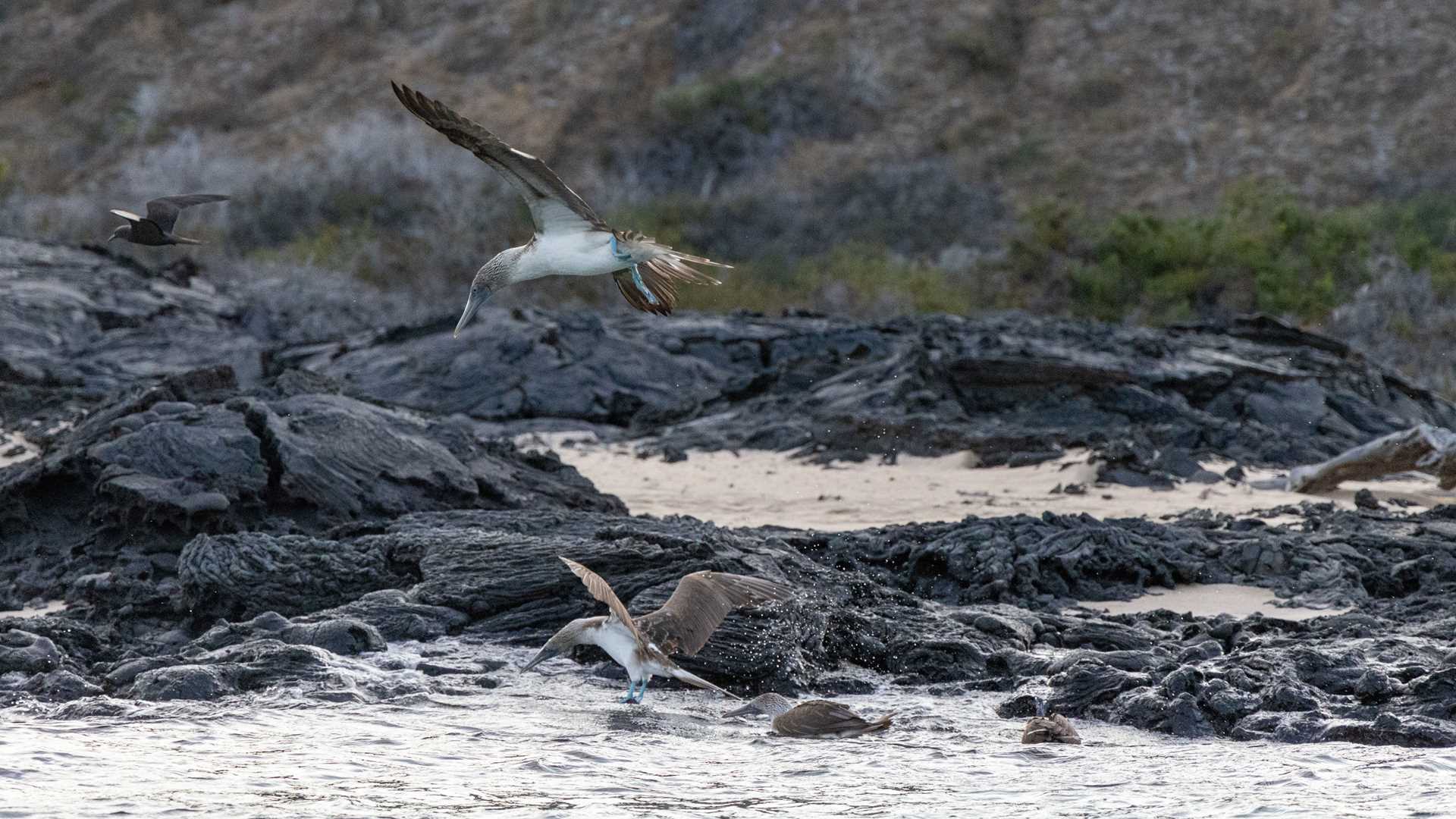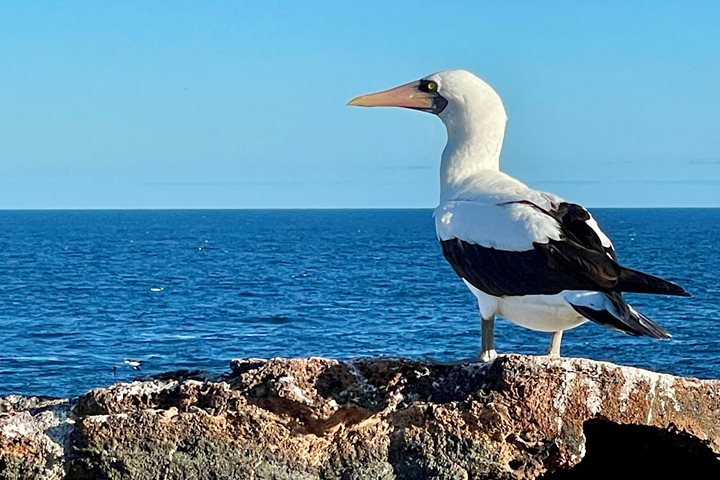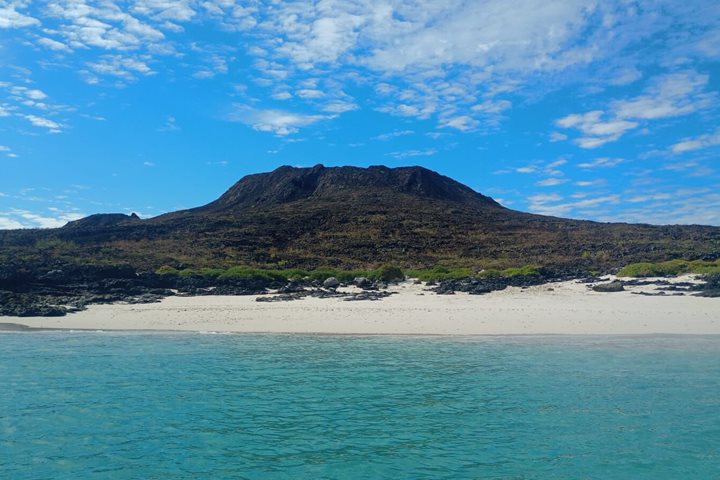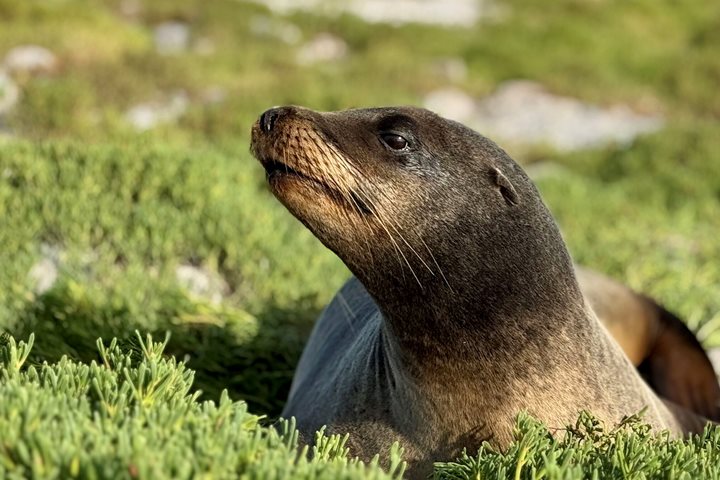Today we anchored at Chinese Hat, an islet off the coast of Santiago Island. This recently formed monogenic cone has a paradisaic view full of colors, including blue, black, and red. We started our morning with water activities and had a great time exploring the coastline by kayaking, Zodiac tours, and swimming.
Later in the day, we continued to the eastern side of Santiago to Sullivan Bay. This popular visitor’s site offers amazing views. The lava field allows guests to experience what feels like a glimpse into outer space. The red colors of the basalt made us feel like the first humans stepping onto Mars.







